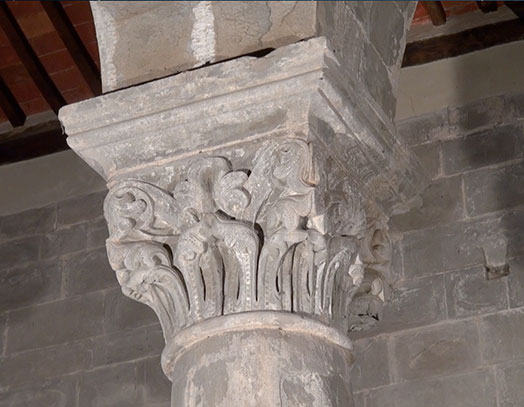CORINTHIAN CAPITAL
left nave, first column
This is the only “pure” Corinthian capital in the pieve, since the next one also has figures. The acanthus, whose leaves form the Corinthian order, have an important symbolic value in Christianity: that of life and immortality, while the thorns represent suffering, sin and its punishment. A twofold value, therefore, whereas in the classical world there was only a positive one. According to Vitruvius (De Architectura, IV, 1, 9-10) the Corinthian order was invented by the Greek architect Callimachus, active during the last three decades of the 5th century B.C., who was impressed by an acanthus that had grown on a grave, and from this attributed the idea of immortality to it.
This elegant capital was executed with a high degree of skill. Its naturalistic style expresses that "return to classicism" which was still felt in Tuscany, more than in other artistic centers such as Lombardy, closer to the conception of the supremacy of the image sanctioned by the Gregorian Reform. Art critics consider the capital close in style to that of a sculptor from Provence (first by Roberto Salvini, in 1966, and more recently Gandolfo, in 2003, among others), whom Gandolfo regards as the author of the next capital as well.

